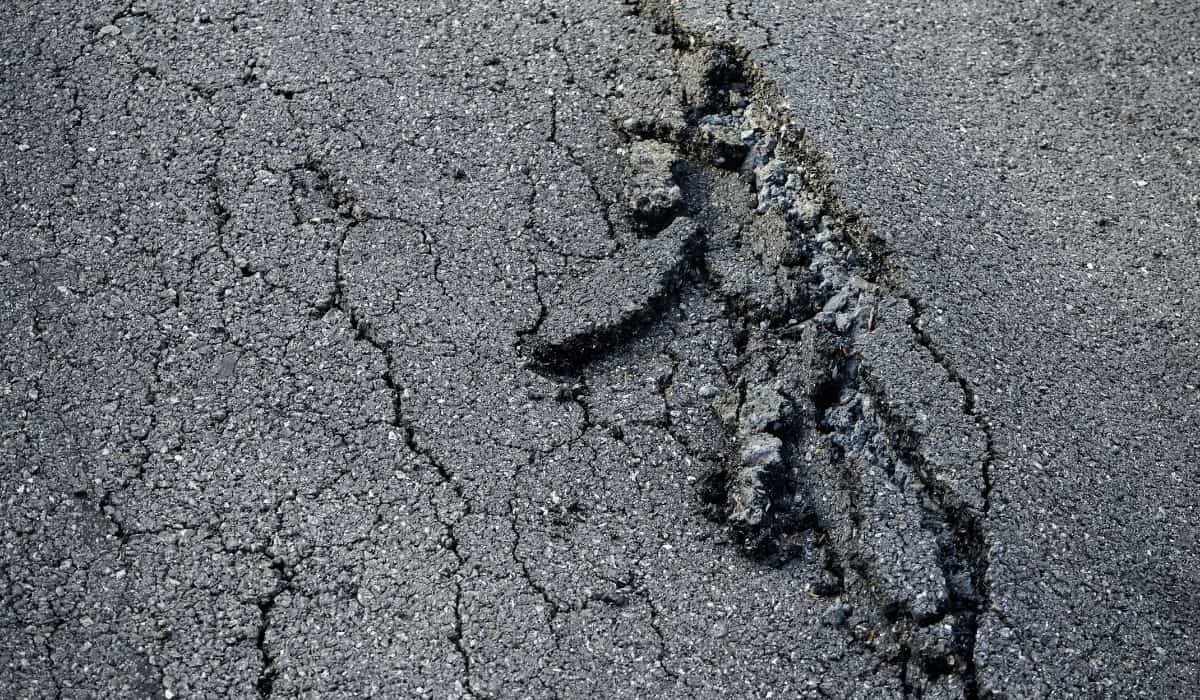The Facts About A1 Professional Asphalt & Sealing Llc Revealed
A1 Professional Asphalt & Sealing Llc Can Be Fun For Everyone
Table of ContentsThings about A1 Professional Asphalt & Sealing LlcSome Ideas on A1 Professional Asphalt & Sealing Llc You Need To KnowGet This Report about A1 Professional Asphalt & Sealing LlcThe Ultimate Guide To A1 Professional Asphalt & Sealing LlcFascination About A1 Professional Asphalt & Sealing Llc

The oil in an auto engine is not just oil. It contains a range of ingredients to boost the lorry's efficiency. These include polymers, thickness modifiers, warmth stabilizers, additional lubes, and wear additives. The REOB has all the additives that were in the waste oil as well as the wear steels from the engine (primarily iron and copper).
Nevertheless, by making several blends utilizing different REOB samples and different asphalt binders, the variations greatly can be balanced out. A number of States provided samples of recognized REOB structure to TFHRC researchers, who analyzed the samples to compare the portion of included (known) REOB to the located (tested) amount. The analyses revealed a similar percentage of added and located REOB.
The 4-Minute Rule for A1 Professional Asphalt & Sealing Llc
None of those States recognized that the asphalt they were getting had REOB. One State urged its samples had no REOB - http://dugoutmugs01.unblog.fr/2024/04/20/a1-professional-asphalt-repairs-enhancing-roads-with-excellence/.
Of the 1,532 examples examined, 12 percent contained REOB, and some consisted of considerably high degrees of it at 1020 percent. The greatest degree was 34 percent in a sample from Texas, which TxDOT had made use of in a patching substance. This testing likewise revealed the presence of phosphoric acid in 11 percent of the samples, and 2 percent included ground tire rubber.
Two years ago at TRB's yearly meeting, the Federal researchers held an REOB workshop and offered the findings of their lab evaluations to a standing room-only crowd. Some agencies do not specifically outlaw REOB, they do enforce physical tests that preclude its useeffectively a ban. Others do not outlaw it by requirements, yet have agreements with asphalt suppliers to stay clear of the use of REOB
The Best Guide To A1 Professional Asphalt & Sealing Llc
A handful do allow REOB, some within specific limits. Ohio and Texas limit levels to less than 5 percent of the asphalt. To create a trusted examination technique that all States can use, the TFHRC researchers established a round-robin test strategy. The individuals are 11 State highway companies (Illinois, Massachusetts, Minnesota, Mississippi, Montana, North Carolina, Oklahoma, South Carolina, Texas, Vermont, and Wyoming), 2 independent screening laboratories, the Ministry of Transportation in Ontario, Queen's University in Ontario, and an Ontario paving professional.
The individuals are examining the samples independently making use of the guidelines provided by the TFHRC scientists. The outcome will certainly be a suggested AASHTO test method that any kind of State can adopt and utilize.
The sidewalk with REOB, which lies 0.6 mile (1 kilometer) from the pavement without REOB, has the same subgrade, traffic density, and climate. The segment of Highway655 with 5 to 10 percent REOB showed considerable breaking. In this instance, the visibility of REOB was the identified source of cracking at a reduced temperature levels.
"In our experience in Canada, also tiny amounts of 23 percent can be an issue." An area of test pavement in Minnesota (MN1-4) discovered to consist of REOB likewise split prematurely. The sidewalk carried out well for the very first 3 to 4 years, yet then began to fracture. This pavement is likewise subject to low temperature levels.
8 Simple Techniques For A1 Professional Asphalt & Sealing Llc
The tests were not extensive, yet they showed that at levels of 6 percent or even more, the tensile strength of the asphalt went down considerably. At a level of 3.5 percent REOB, the variant in the physical test approaches was greater than the result of REOB. It was hard for scientists to assess whether REOB was existing. https://packersmovers.activeboard.com/t67151553/how-to-connect-canon-mg3620-printer-to-computer/?ts=1713554746&direction=prev&page=last#lastPostAnchor.

One binder specification thought about is the distinction between the reduced temperature level crucial spec temperature for tightness (S) in the flexing beam of light rheometer and the bending beam of light rheometer creep slope (m-value) kept in mind as Tcritical. TC = TC (S) TC (m-value). Evaluation of this criterion is still recurring. 2 independent research study groups, one from AASHTO and the various other from the Asphalt Institute, ended that more research is required on the usage of REOB in asphalt.
Previously, all asphalt screening determined engineering properties such as tightness. These examinations do disappoint what products had been contributed to the asphalt. One example gotten throughout the TFHRC study had a very weird evaluation. The example had the adhering to examination outcomes: Superpave PG 64-28 with a high temperature quality of 67.3 Tcritical on the bending beam of light rheometer was 6.7 levels Celsius.

A1 Professional Asphalt & Sealing Llc - Questions
These outcomes demonstrate there are weak points in the standardized design screening procedures that might be manipulated. The manufacturer might have a financial benefit and the product passes all the standard tests, however the product may not be valuable to making certain lasting this article performance. To address this issue and the development of brand-new asphalt additives and extenders, TFHRC is starting a study program to utilize portable spectroscopic tools, x-ray fluorescence spectroscopy, and Fourier transform infrared spectroscopy to make it possible for evaluations to be done in the area instead than needing to take samples back to the lab.